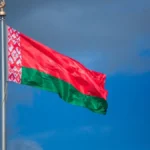Bosnia and Herzegovina is a country with a deep and diverse cultural history, shaped by centuries of different civilizations, empires, and traditions. The Bosnia and Herzegovina heritage is a unique blend of Eastern and Western influences, reflecting the nation’s past as a crossroads of cultures. From medieval fortresses to Ottoman-era architecture and Austro-Hungarian landmarks, this nation offers a treasure trove of historical and cultural riches.
A Fusion of Civilizations
The Bosnia and Herzegovina heritage is shaped by multiple civilizations, including the Illyrians, Romans, Byzantines, and Slavs. The region saw significant influence from the Ottoman Empire, which introduced Islamic culture, mosques, and traditional Ottoman architecture. Later, the Austro-Hungarian Empire brought European-style buildings, further enriching the country’s cultural diversity. This blend of influences makes Bosnia and Herzegovina one of the most historically and architecturally diverse countries in Europe.
Iconic Historical Landmarks
The Bosnia and Herzegovina heritage is best showcased through its stunning landmarks. Some of the most notable sites include:
- Stari Most (Old Bridge) in Mostar – A symbol of unity and resilience, this 16th-century Ottoman bridge is a UNESCO World Heritage site.
- Sarajevo’s Baščaršija – The old bazaar and cultural heart of the capital, reflecting Ottoman influences.
- Mehmed Paša Sokolović Bridge in Višegrad – Another UNESCO site, this Ottoman-era bridge was designed by the famous architect Mimar Sinan.
- Jajce Fortress and Pliva Waterfalls – A medieval gem that highlights the rich history of Bosnian kingdoms.
- Stećci Medieval Tombstones – These unique stone tombstones, scattered across the country, reflect medieval Bosnian traditions and have been recognized by UNESCO.
Religious and Cultural Diversity
The Bosnia and Herzegovina heritage is deeply tied to religious and cultural coexistence. The country is home to Muslims, Orthodox Christians, Catholics, and Jews, each contributing to its cultural mosaic. The Gazi Husrev-beg Mosque in Sarajevo, the Sarajevo Cathedral, and the Serbian Orthodox Cathedral exemplify this religious diversity.
Traditional Arts and Music
The rich traditions of Bosnia and Herzegovina heritage extend into its music and arts. The country is famous for sevdalinka, a melancholic folk music genre that tells tales of love and longing. Handcrafted carpets, pottery, and woodwork also reflect the country’s artistic heritage, with many artisans preserving centuries-old techniques.
Bosnia and Herzegovina’s Culinary Legacy
Food is an integral part of the Bosnia and Herzegovina heritage. Traditional dishes such as cevapi (grilled minced meat sausages), burek (savory pastry), and dolma (stuffed vegetables) highlight the Ottoman influence on Bosnian cuisine. Coffee culture is also deeply rooted, with Bosnian coffee prepared similarly to Turkish coffee, symbolizing hospitality and tradition.
Preserving Bosnia and Herzegovina Heritage
Efforts to preserve Bosnia and Herzegovina heritage are ongoing. Organizations work to restore historical sites, promote traditional crafts, and document oral traditions. The country’s rich heritage faces challenges due to past conflicts, but cultural institutions and UNESCO projects play a crucial role in ensuring these treasures remain for future generations.
Conclusion
The Bosnia and Herzegovina heritage is a testament to its historical resilience, cultural richness, and diverse influences. From breathtaking landmarks and religious harmony to unique traditions and delicious cuisine, this Balkan nation continues to captivate visitors and historians alike. By preserving its heritage, Bosnia and Herzegovina ensures that its remarkable past remains an inspiration for the future.
Get more info: https://www.timelinetale.com/







